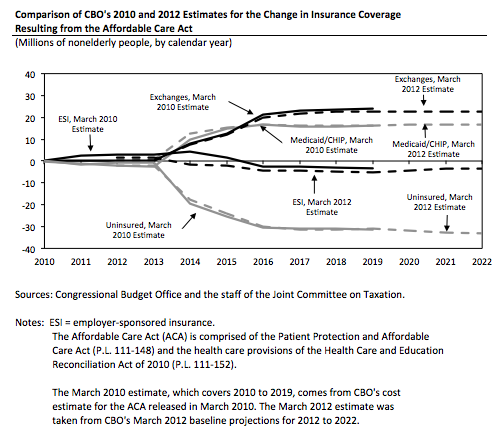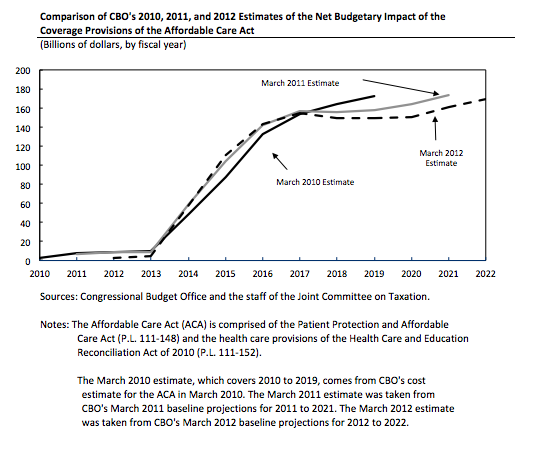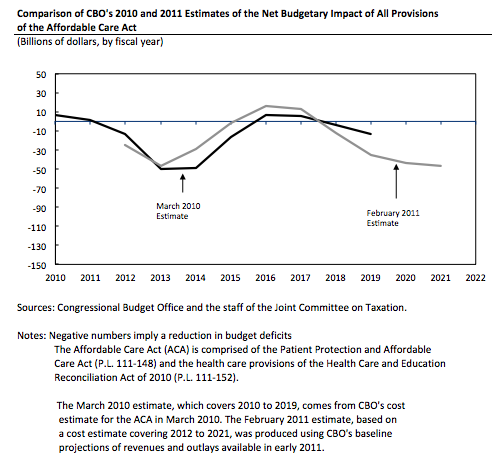CBO released two reports this week related to the analysis of the Affordable Care Act (ACA) conducted by CBO and the staff of the Joint Committee on Taxation (JCT). One report presented updated estimates for the insurance coverage provisions of the ACA, and the other responded to questions we’ve received regarding the effects of the ACA on employment-based health insurance.
Some of the commentary on those reports has suggested that CBO and JCT have changed their estimates of the effects of the ACA to a significant degree. That’s not our perspective.
Assessing the impact of broad changes in the nation’s health insurance system, like those in the ACA, requires assumptions and projections about a wide array of technical, behavioral, and economic factors. CBO and JCT, in consultation with outside experts, have devoted a great deal of care and effort to analyzing health care legislation in the past few years—but our estimates are still very uncertain. We will continue to update our estimates regarding health insurance coverage as new information becomes available about the implementation of the ACA, underlying trends in the health care and health financing systems, and the probable responses to the legislation by businesses, families, and others. In addition, we are continually trying to improve our modeling techniques and estimating procedures.
It is certainly possible that—at some point—new legislation, new information, and new models or estimating procedures will lead us to make significant changes to our estimates of the effects of the ACA. So far, however, that has occurred for only one significant provision of the ACA—the CLASS long-term care insurance program, which the Administration has concluded it cannot implement. (For more information on that topic, see this letter.)
For the provisions of the Affordable Care Act related to health insurance coverage, CBO and JCT’s latest estimates are quite similar to the estimates we released when the legislation was being considered in March 2010. The following figure shows CBO and JCT’s projections of the effects of the ACA on the number of people who will be uninsured or will receive insurance coverage through employer-sponsored insurance (ESI), insurance exchanges, or Medicaid or the Children’s Health Insurance Program (CHIP). Although the latest projections extend the original ones by three years (corresponding to the shift in the regular 10-year projection period since the ACA was first being developed), the projections for each given year have changed little, on net, since March 2010.

The estimated budgetary impact of the coverage provisions has also changed little. The following figure shows CBO and JCT’s projections of the net cost to the federal government of the insurance coverage provisions of the ACA. Again, the latest projections extend the original ones by three years, but the projections for each given year have changed little, on net, since March 2010.

CBO and JCT have not updated their estimate of the full budgetary impact of the legislation this year. Most of the provisions that are not related to insurance coverage involve ongoing programs or revenue streams, so it is very difficult to separate the effects of the ACA from other developments affecting those programs or revenue streams. The following figure shows CBO and JCT’s projections of the net cost to the federal government of all the provisions of the ACA. Our projections made last February (our most recent ones for all the provisions of the law) extended the original ones by two years, but again changed little, on net, from the original projections for each given year.


